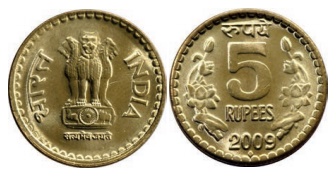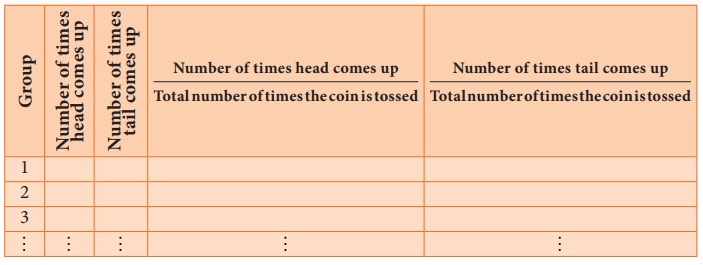Probability | Maths - Basic Ideas | 9th Maths : UNIT 9 : Probability
Chapter: 9th Maths : UNIT 9 : Probability
Basic Ideas
Basic Ideas
When we carry
out experiments in science repeatedly under identical conditions, we get almost
the same result. Such experiments are known as deterministic.
For example, the experiments to verify Archimedes principle or to verify Ohm’s law
are deterministic. The outcomes of the
experiments can be predicted well in advance.
But, there
are experiments in which the outcomes may be different even when performed under
identical conditions. For example, when a fair dice is rolled, a fair coin is flipped
or while selecting the balls from an urn, we cannot predict the exact outcome of
these experiments; these are random experiments.
Each performance of a random experiment is called a trial and the result of each
trial is called an outcome. (Note: Many statisticians
use the words ‘experiment’ and ‘trial’ synonymously.)
Now let us
see some of the important terms related to probability.
Trial : Rolling a dice and flipping a coin are trials. A trial is an action which results
in one or several outcomes.
Outcome : While flipping a coin we get Head or Tail . Head and Tail are called
outcomes.
The result
of the trial is called an outcome.
Sample point : While flipping a coin, each outcome H or T are the sample points. Each outcome of a random experiment
is called a sample point.
Sample space : In a single flip of a coin, the collection of sample points is given
by
S = {H,T}.
If two coins
are tossed the collection of sample points S={HH,HT,TH,TT}.
The set of
all possible outcomes (or Sample points) of a random experiment is called the Sample space. It is denoted by S. The number
of elements in it are denoted by n(S).
Event : If a dice is rolled, it shows 4 which is called an outcome (since,
it is a result of a single trial). In the same experiment the event of getting an even
number is {2,4,6}. So any subset of a sample space is called an event. Hence an event can be one
or more than one outcome.
For example
(i) Random
experiment : Flipping a coin
Possible
outcomes : Head(H ) or Tail(T )
Sample space
: S = {H,T}
Subset of
S : A={H} or A={T}
Thus, in
this example A is an event.

(ii) When
we roll a single dice, the collection of all sample points is S = {1,2,3,4,5,6}.
(iii) When
we select a day in a week the collection of sample points is S = {Sunday,
Monday, Tuesday, Wednesday, Thursday, Friday, Saturday}.
Activity − 1
Perform the experiment of tossing two coins at a time. List out the
following in the above experiment.
Random experiment:
Possible outcomes:
Sample space:
Any three subsets of S (or any 3 events) :
Perform the experiment of throwing two dice at a time. List out the
following in this experiment also.
Random experiment :
Possible outcomes :
Sample space :
Any three subsets of S (or any 3 events) :
Activity − 2
Each student is asked to flip a coin 10 times and tabulate the number
of heads and tails obtained in the following table.

Repeat it by tossing the coin 20, 30, 40, 50 times and find the fractions.
Activity − 3
Divide the class students into groups of pairs. In each pair, the
first one tosses a coin 50 times, and the second one records the outcomes of tosses.
Then prepare a table given below.

Related Topics